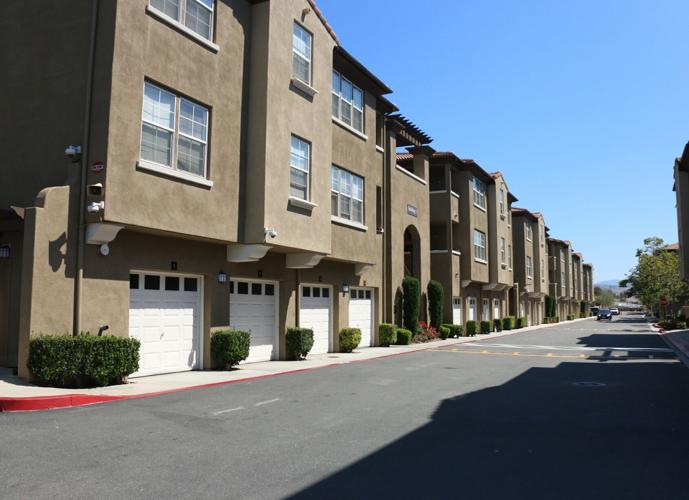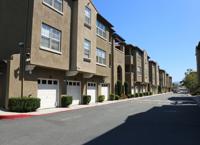By Shawn Raymundo
Over the coming months, the city is responsible for finding and zoning areas in San Clemente to potentially place more than 980 new housing units—a requirement the state sets on cities to ensure that it can accommodate those homes, address California’s housing shortage and increase availability of affordable units.
Of the 982 new homes that the city of San Clemente will need to plan for as part of its Housing Element update, 446 units are allocated toward low- and very-low-income housing, while the rest are dedicated for moderate-income and above-moderate-income housing.
“The city doesn’t have to build these units, but we do have to plan for these units, and we do this through the Housing Element,” Senior Planner Jennifer Savage explained during the city’s Planning Commission meeting last week.
The numbers come from the California Department of Housing and Community Development’s Regional Housing Needs Assessment, which is determined by the expected population of households, overcrowding and vacancy percentages over an eight-year period.
As part of the assessment, the Southern California Association of Governments in late 2019 was assigned with identifying land for 1.34 million additional housing units across the four income categories. Orange County was to take on more than 180,000 of those homes.
In its agenda report for the Planning Commission, the city emphasized that there’s no guarantee such homes will ever be built. It’s only “required to provide opportunities for the market to build housing units by planning for housing through site identification and, in some cases, rezoning.”
To comply with the state’s requirement, the city recently began the process of compiling a preliminary list of sites and areas across San Clemente that could be rezoned to allow for the new homes.
The draft list of sites, which will later require further consideration from the Planning Commission followed by the city council’s final approval, currently identifies parcels for potential rezoning where housing may be suitable.
Such sites include the Lowe’s and Walmart shopping center, as well as the Pico Plaza area off Interstate 5. It also included the site where Target sits; however, based on the commissioners’ comments last week, it’ll likely be removed.
Savage noted that residents and the Planning Commission will have additional opportunities to weigh in on the draft list and provide feedback for other potential areas.
“The sites you see on the draft list may or may not remain,” Savage told planning commissioners. “The city does not need to rezone all of those sites.”
According to Savage, one method to comply with the RHNA numbers and plan for the amount of housing needed is by creating a housing overlay zone—an additional layer of zoning atop an existing zone designation.
“This housing overlay would consider housing at all income levels, including housing for above-moderate households,” Savage said. “It would specify specific sites that would maintain their base or existing zoning designation.”
“The housing overlay would not change the existing uses, but it would provide the opportunity to add or redevelop for housing depending on the market or interest from property owners,” she continued.
Addressing some of the sites on the draft list, Savage explained that many parcels are being considered because San Clemente is largely built out and because of the amount of land that’s currently protected by open space provisions.
To get the community’s feedback on where to potentially rezone for housing, the city this past February and March invited residents to participate in a housing site survey. Savage reported that the city received 617 responses to its list of a dozen questions.
The survey, she outlined, found that about 20% of respondents were open to rezoning in areas along South El Camino Real (south of Avenida Del Mar), 20% favored a Talega Special Plan area, while 33% said “other.” Among those who supported “other,” 50% said no to any new housing in San Clemente.
According to the city, if it opted not to comply with the state’s requirement and plan for housing, it could face up to $300,000 a month in fines, as well as lose out on grant funding. A court could also mandate the rezoning and place a moratorium on the city’s ability to issue building permits until it does so—a scenario the city has recently experienced.
In February 2017, the Orange County Superior Court issued an order barring the city from approving building permits and zoning changes, among other things, unless it came into compliance with the state’s homeless shelter law, Senate Bill 2.
The law, enacted in 2007, requires cities to create zones, referred to as SB2 zones, where groups can establish shelters for the homeless. Emergency Shelter Coalition, a homeless advocacy nonprofit, had filed a lawsuit against the city over allegations that it had failed to comply with the law.
Broken down, above-moderate-income homes account for more than 35% of the total RHNA numbers that San Clemente is required to plan for, the most of the four income levels. Very-low-income housing units account for nearly 29%.
The requirement from the state has prompted concerns from residents who falsely believe the city has to build 982 affordable housing units and are fearful that low-income or affordable housing will increase crime in San Clemente.
During their April 7 meeting, planning commissioners, including Chairperson Jim Ruehlin, argued against such claims, stating that it’s unfair to equate low-income housing to higher crime rates.
“It was kind of a built-in assumption among many of those comments that low-income housing equals crime, and that simply isn’t the case,” Ruehlin said of the public comments that were read during the meeting. “And I think that’s a little bit unfair to attach that to people who move in there automatically.”
In 2015, the Stanford Business School published a report by Rebecca Diamond and Timothy McQuade, who had studied the socioeconomic effects of low-income housing on surrounding communities in both low-income and high-income areas.
What they found was while low-income housing developments built within high-income areas with a low minority population did lead to a decline in property values by about 2.5% within a 0.1-mile radius, crime did not go up.
And in low-income areas, affordable housing actually boosted local property values by about 6.5%—also within 0.1 miles of the site—decreased segregation and also caused violent and property crimes to decline.
Further addressing residents’ concerns, Ruehlin later added that any project to develop affordable housing within the areas being considered will still have to meet the city’s design standards and specifications.
“What you see from that street has to be of high-quality design, has to be pleasant to look at, has to look pretty good to fit our design standards,” he said, referring to the stretch of Avenida Pico between I-5 and Avenida La Pata.
To further address the misconceptions of low-income housing, Commissioner Zhen Wu also explained that affordable housing is meant to support local workers whose annual income wouldn’t otherwise permit them to afford renting or buying in affluent areas like San Clemente.
“So, who are these people? They’re our service providers, they’re our teachers,” Wu said. “The city is obligated by state law to provide feasible housing opportunities to them. I think that’s important for people to understand that.”
The city is expected to present the draft Housing Element update to the Planning Commission for further consideration on May 5 and will present it to the city council on May 18. The environmental impact report for the update is likely to be completed over the summer.
The Planning Commission and the city council will each get another pass at reviewing the update to the Housing Element in late August and mid-September—before being sent to the state’s Department of Housing and Community Development in mid-October.

SR_1
Shawn Raymundo
Shawn Raymundo is the city editor for the San Clemente Times. He graduated from Arizona State University with a bachelor’s degree in Global Studies. Before joining Picket Fence Media, he worked as the government accountability reporter for the Pacific Daily News in the U.S. territory of Guam. Follow him on Twitter @ShawnzyTsunami and follow San Clemente Times @SCTimesNews.




